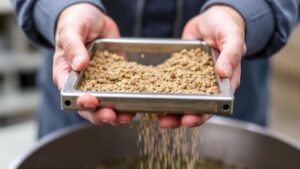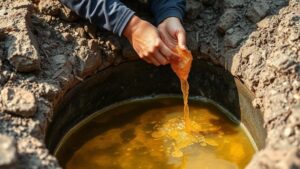How to Identify False Bedrock in Areas of High Gold Potential
How to Identify False Bedrock in Areas of High Gold Potential
The identification of false bedrock is crucial for successful gold prospecting. False bedrock refers to layered materials that superficially appear to be bedrock yet do not possess the geological characteristics of actual bedrock. Misidentifying these materials can lead to misguided prospecting efforts and significant financial losses. This article outlines the key aspects of identifying false bedrock in regions renowned for gold deposits.
Understanding Bedrock and False Bedrock
Bedrock is solid rock that lies beneath soil and other unconsolidated materials. It is typically composed of igneous, metamorphic, or sedimentary rock that forms the foundation of the earths crust. In contrast, false bedrock may appear rocky at first glance, but it is often a result of various weathering processes, sedimentation, or anthropogenic activities.
Distinguishing between true and false bedrock is particularly important in alluvial gold deposits, which are often located in riverbeds and other sedimentary environments. Successful identification can lead to improved gold recovery rates.
Key Indicators of False Bedrock
Several geological indicators can help prospectors identify false bedrock. Understanding these indicators will assist in making more informed decisions during exploration:
- Color and Texture: False bedrock may exhibit irregular colors and textures due to weathering processes. Real bedrock tends to have a more uniform appearance.
- Grain Size: The presence of larger grains or pebbles embedded in a finer matrix often signifies false bedrock, while true bedrock typically shows more consistent grain sizes.
- Structural Features: True bedrock may contain folds, faults, or layering indicative of geological processes. absence of these features can suggest that the material is false bedrock.
Geological Surveys and Mapping
Conducting geological surveys and employing mapping techniques are essential in distinguishing bedrock types. Modern tools such as geophysical surveys, drilling, and geological mapping can provide invaluable data. For example, using resistivity imaging can help differentiate between solid bedrock and the false bedrock composed of saturated sand or gravel.
Also, creating cross-sectional maps through geological surveys helps visualize subsurface conditions. Identifying discrepancies in rock strata can be indicative of areas needing further investigation.
Field Testing for Verification
Verifying the presence of true bedrock may require field testing. Common methods include:
- Core Sampling: Extracting core samples allows a direct examination of subsurface materials and is one of the most effective ways to confirm bedrock type.
- Trenching: Digging trenches provides a larger area for observation and can reveal the layering of materials, further indicating the presence or absence of solid bedrock.
- Visual Assessments: Conducting thorough visual inspections and documenting observations can help identify characteristics that distinguish false bedrock from true bedrock.
Real-World Applications and Case Studies
Numerous fields in the mining industry have successfully employed these techniques. For example, the geologists at the Yanacocha Gold Mine in Peru utilized resistivity surveys combined with core sampling to discriminate between true bedrock and false bedrock, ultimately increasing gold yield efficiency.
Similarly, prospectors in the Black Hills of South Dakota have adopted trenching methods to expose underlying bedrock, proving essential in determining fruitful mining locations in mineral-rich zones.
Challenges and Considerations
While identifying false bedrock is critical, several challenges may arise:
- Natural Variability: Geological conditions can vary widely even within small areas, complicating identification efforts.
- Cost of Testing: Some field testing methods, such as core sampling, can be financially and logistically taxing for small-scale prospectors.
Understanding these challenges and preparing accordingly can lead to more successful gold prospecting endeavors.
Conclusion
Accurate identification of false bedrock is an integral component of gold exploration efforts. By employing geological surveys, field-testing methods, and by recognizing key indicators, prospectors can significantly enhance their chances of success. Investing in thorough investigation techniques and data analysis can lead to substantial rewards in areas of high gold potential.
As you embark on your gold prospecting journey, remember these actionable takeaways:
- Conduct initial geological surveys to familiarize yourself with the area.
- Use core sampling and trenching to confirm bedrock types before investing in mining operations.
- Document all findings for future reference and continued learning.


